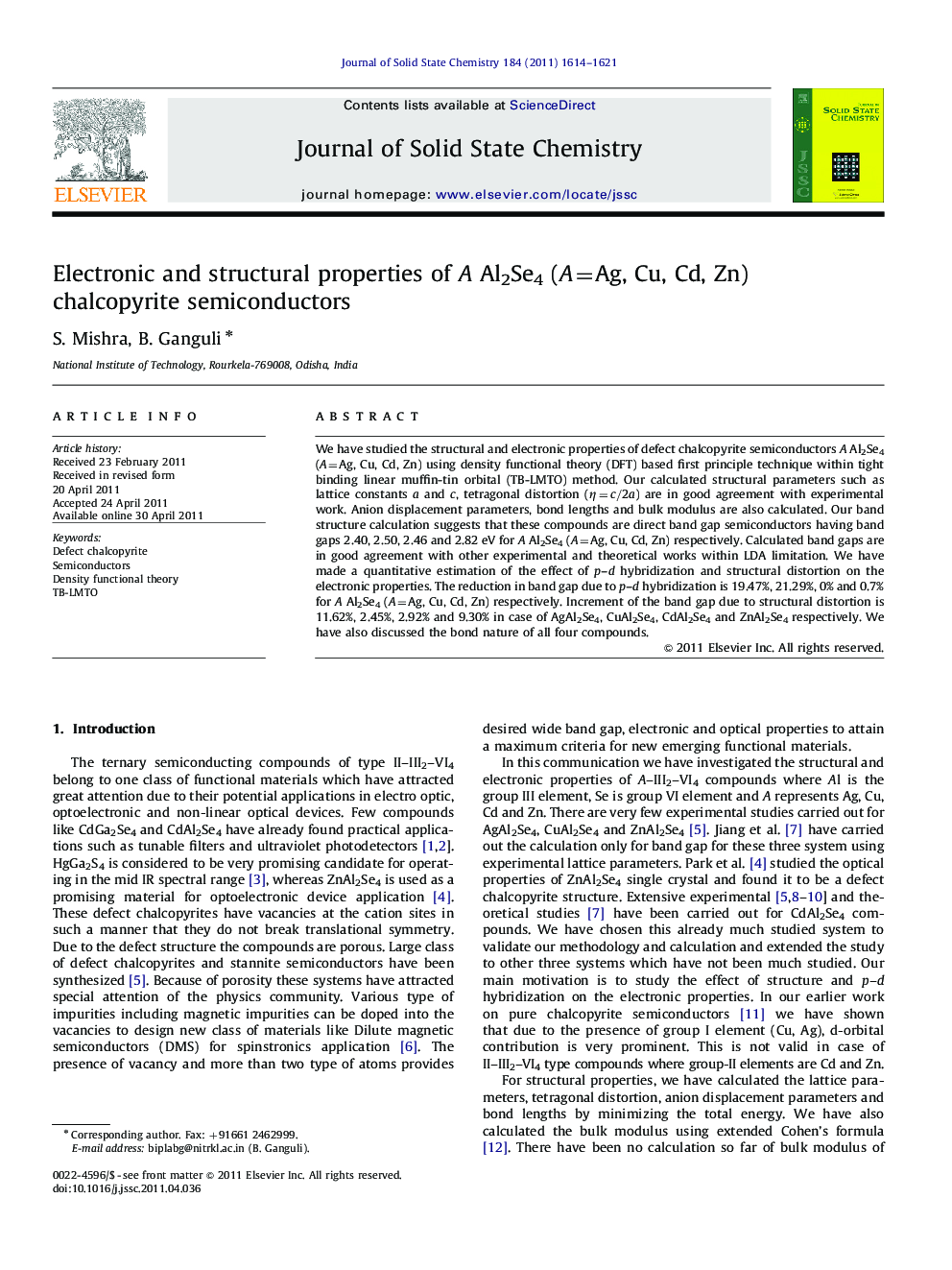| Article ID | Journal | Published Year | Pages | File Type |
|---|---|---|---|---|
| 1332896 | Journal of Solid State Chemistry | 2011 | 8 Pages |
We have studied the structural and electronic properties of defect chalcopyrite semiconductors A Al2Se4 (A=Ag, Cu, Cd, Zn) using density functional theory (DFT) based first principle technique within tight binding linear muffin-tin orbital (TB-LMTO) method. Our calculated structural parameters such as lattice constants a and c , tetragonal distortion (η=c/2aη=c/2a) are in good agreement with experimental work. Anion displacement parameters, bond lengths and bulk modulus are also calculated. Our band structure calculation suggests that these compounds are direct band gap semiconductors having band gaps 2.40, 2.50, 2.46 and 2.82 eV for A Al2Se4 (A=Ag, Cu, Cd, Zn) respectively. Calculated band gaps are in good agreement with other experimental and theoretical works within LDA limitation. We have made a quantitative estimation of the effect of p–d hybridization and structural distortion on the electronic properties. The reduction in band gap due to p–d hybridization is 19.47%, 21.29%, 0% and 0.7% for A Al2Se4 (A=Ag, Cu, Cd, Zn) respectively. Increment of the band gap due to structural distortion is 11.62%, 2.45%, 2.92% and 9.30% in case of AgAl2Se4, CuAl2Se4, CdAl2Se4 and ZnAl2Se4 respectively. We have also discussed the bond nature of all four compounds.
Graphical abstractBand structure and TDOS show the band gaps and effect of structural distortion on electronic properties. PDOS shows effect of p–d hybridization on band gaps for all four compounds.Figure optionsDownload full-size imageDownload as PowerPoint slideHighlights► (Ag/Cu/Cd/Zn)Al2 Se4 have direct band gap of 2.4, 2.5, 2.46 and 2.82 eV respectively. ► p–d hybridization reduces band gaps by 19.5%, 21.3% for (Ag/Cu)Al2Se4 respectively. ► No effects of? p–d hybridization on the band gaps for (Cd/Zn)Al2Se4 and ZnAl2Se4. ► Significant enhancement in band gap due to structural distortion in all the compounds. ► Effects of bond nature on band gaps are also studied in all the compounds.
